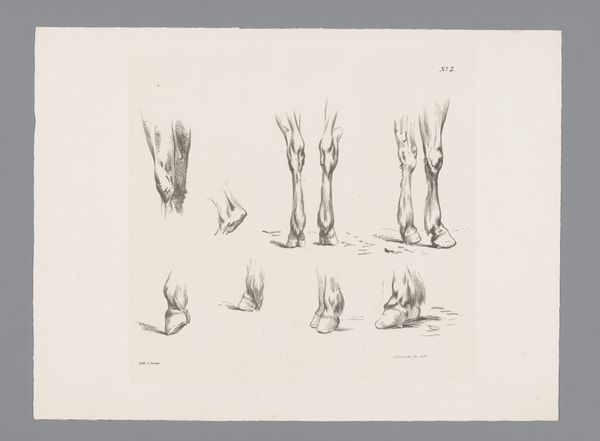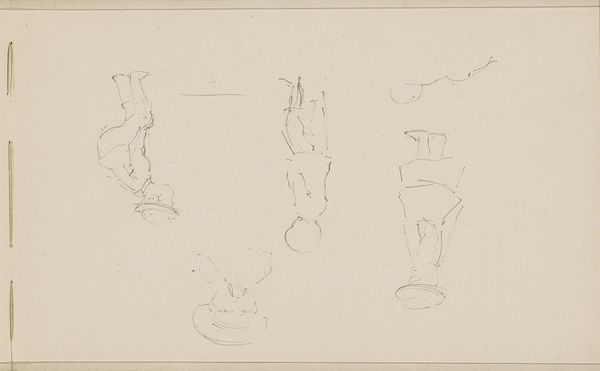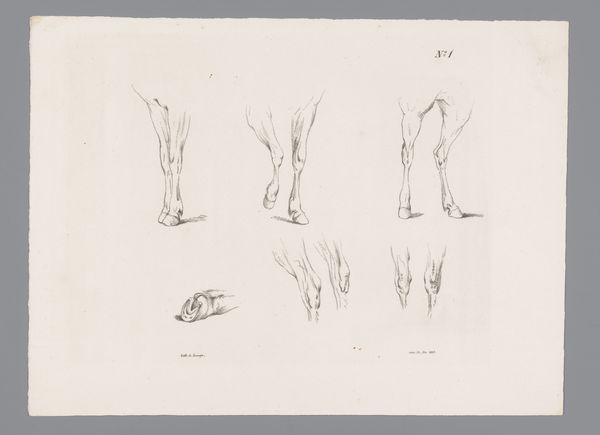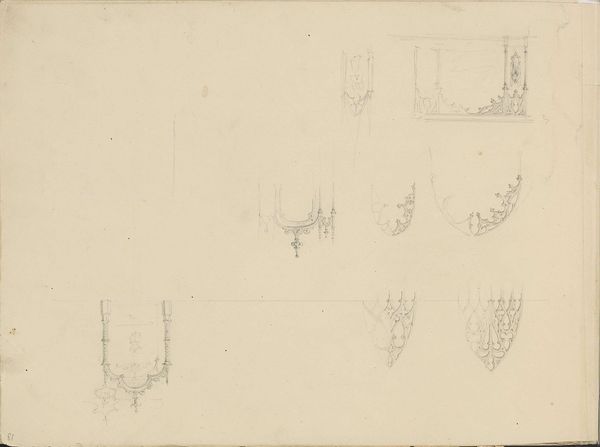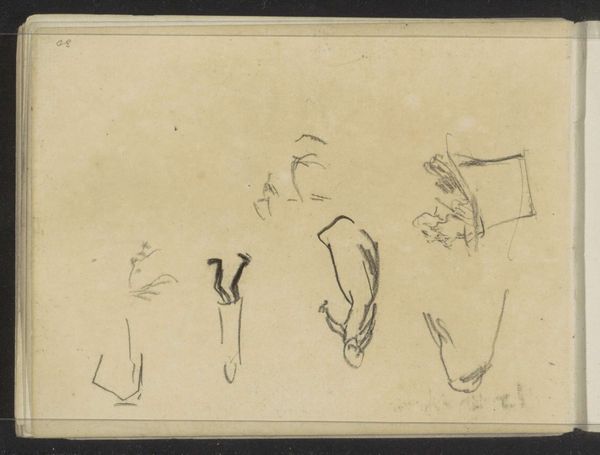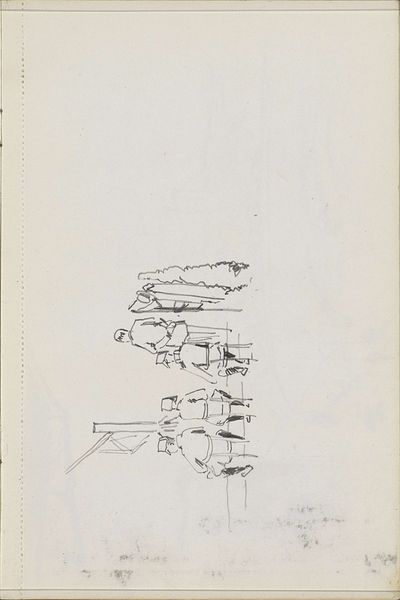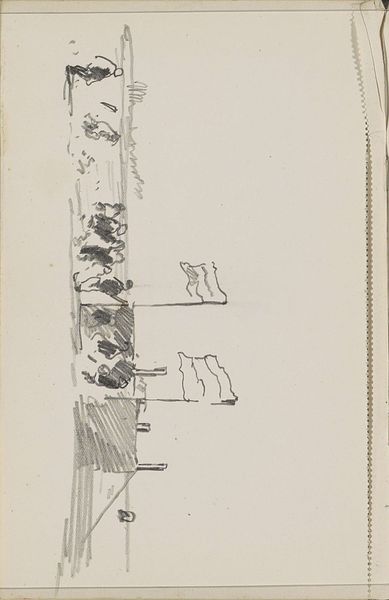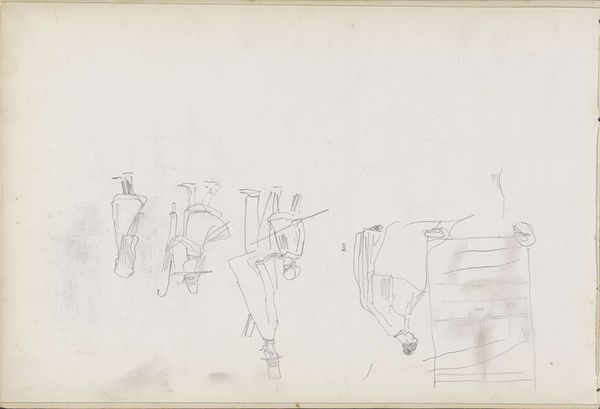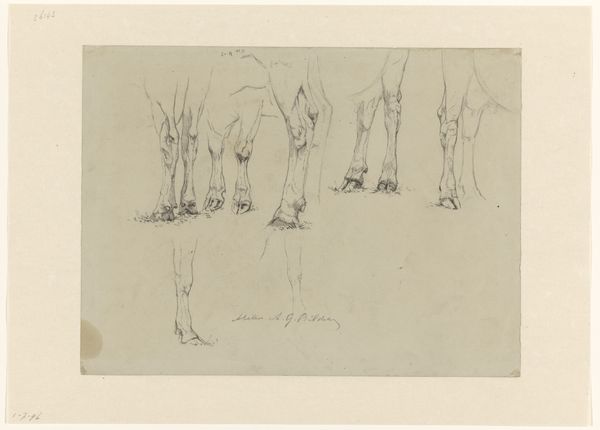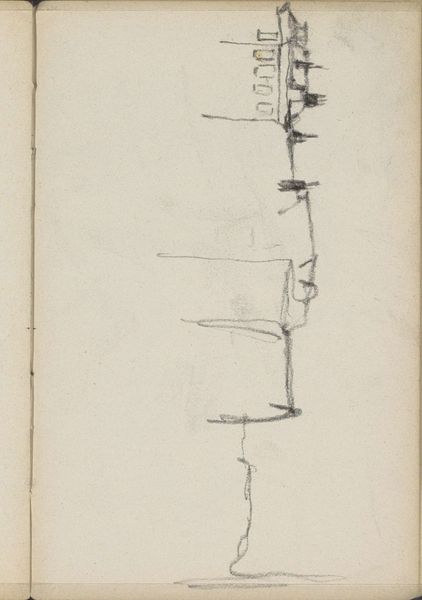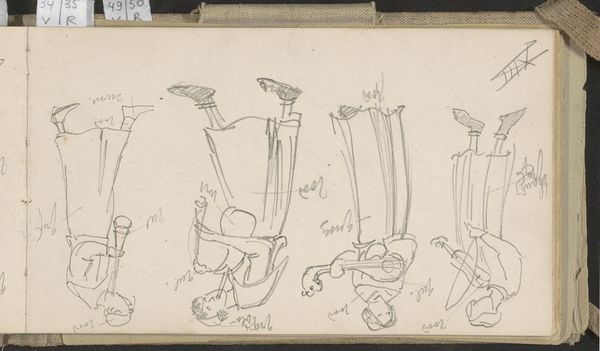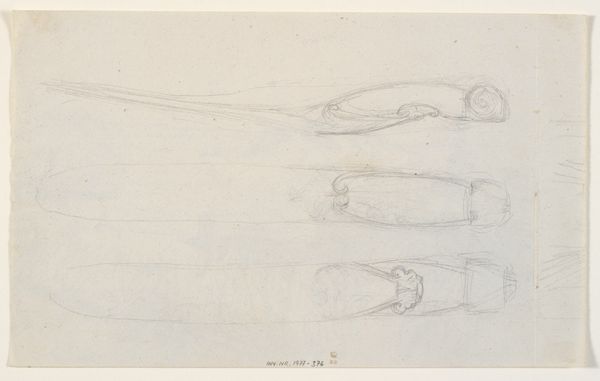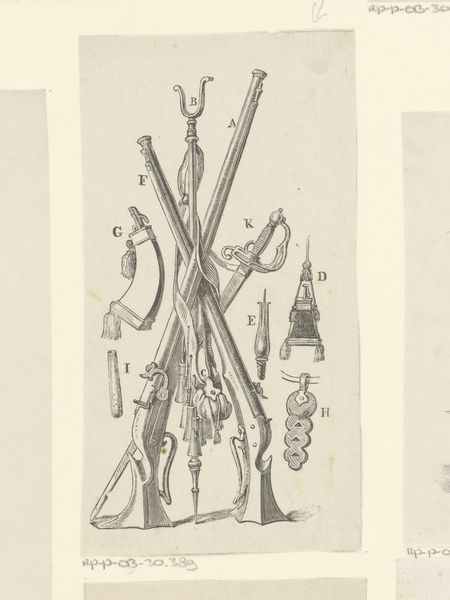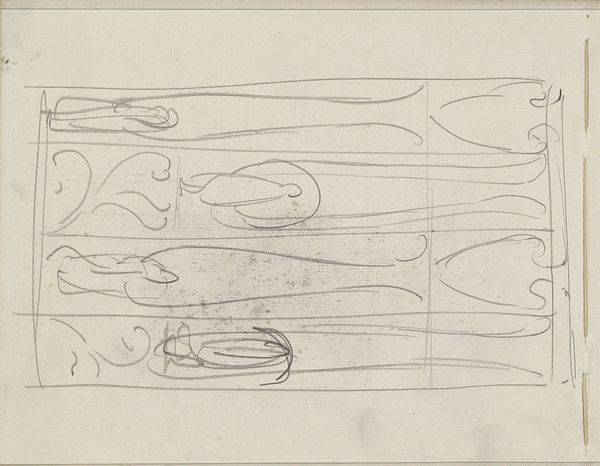
drawing, print, pen
#
drawing
#
underwear fashion design
#
comic strip sketch
# print
#
caricature
#
figuration
#
personal sketchbook
#
idea generation sketch
#
sketchwork
#
comic
#
visual diary
#
line
#
sketchbook drawing
#
pen
#
genre-painting
#
storyboard and sketchbook work
#
fashion sketch
#
initial sketch
Dimensions: height 215 mm, width 275 mm
Copyright: Rijks Museum: Open Domain
Editor: This intriguing print from 1872, "Spotprent op de ministeriële crisis" by Johan Michaël Schmidt Crans, rendered in pen, ink, and drawing, shows only the legs and feet of a group of figures. The stark composition, emphasizing only the lower halves, is strangely captivating. What can we make of this piece? Curator: What immediately strikes me is the deliberate act of fragmentation. The artist chooses to depict *only* the legs. Consider the socio-political context. What commentary is being made about power structures when only the foundational elements, the support system, are visible? Who does that exclude from the picture of "Ministerial Crisis," and what means of production put that image on a piece of paper for mass consumption? Editor: That's interesting – focusing on what's *not* shown. So you're saying the material process, like the printing, has an impact too? Curator: Absolutely. Printmaking allowed for broad dissemination of political ideas. This work challenges any illusion of detached artistry by using images produced, paid for, and traded to the masses. Consider, too, the material reality of these figures. Are we looking at class distinctions encoded in footwear, tailoring, and overall presentation of material goods? Editor: I didn't think of it that way, about consumption! Curator: The very *act* of creating this caricature involved resources: paper, ink, the artist’s time – each of these elements embedded within a larger network of economic exchange. What is the labor, then, involved in making such a work widely available, in allowing more people to see or consume that political commentary? Editor: Thinking about it in terms of labor, the economic and material side... I see so many more dimensions. Thank you! Curator: And in viewing art with an eye toward materiality, you begin to question inherent structures themselves.
Comments
No comments
Be the first to comment and join the conversation on the ultimate creative platform.
